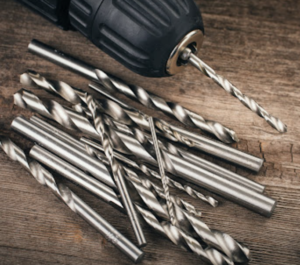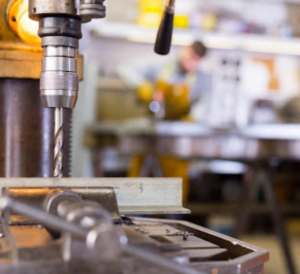Bits For Drilling Into Brick And Mortar:
How To Drill Like A Pro
Guest Post by Raymond Hartin
 Brick and mortar are known for their appealing looks.
Brick and mortar are known for their appealing looks.
However, not knowing how to drill into it without causing any damage is an essential skill.
Drilling into brick and mortar without damaging or cracking doesn’t require special skills.
You don’t even need to be a handyman. If you have the right masonry drill bits, drills, and some basic skills, learning how to drill into brick is easy.
To get started, here are the steps to drill like a pro:
Assess The Project
Every brick and mortar is created differently, and home improvement projects vary from one another.
To know what you need to do, you should assess the project.
For instance, are you planning to drill different holes into the brick?
If so, you might want to forget about using regular electric drill and rent a heavy-duty one instead.
In addition, you should also know how old the brick is as you assess the project.
Drilling holes and hanging a heavy object that needs additional materials and expansion anchors might not be possible if the structure is old or deteriorating.
Many tasks will require you to drill directly into the bricks since they’re stronger than mortar.
For lighter fixings you might want to drill directly into the mortar.
Select The Appropriate Drill And Drill Bit Size
You want to ensure that you’re working with the appropriate drill and drill bits.
Carefully choosing such items can prevent you from causing irreparable damage or cracking to the material.
As mentioned, you’ll need a hammer drill instead of the standard one.
Hammer drills are the perfect power tools for drilling into brick and mortar, particularly if you need bigger holes.
This type of power tool works as a drill and hammer hybrid, which forces hammer-like movements into the brick with enough force to penetrate the concrete.
Hammer drills have two primary actions: breaking through the material and drilling through it to eliminate the debris from the boring home.
At present, there are two kinds of hammer drills:
- Rotary Hammer Drills: They’re suitable for drilling holes that exceed half an inch in diameter.
- Standard Hammer Drills: They’re the best go-to power tools for drilling holes that are half an inch or less.
Understanding the difference between these two and how to drill into brick and mortar using a hammer drill can let you work with precision.
For drill bits, you’ll need purpose-designed ones for brick and mortar, also referred to as masonry drill bits,
You have to consider the right size suited to your project and hammer drill.
Most masonry bits have exceptional power to break up masonry, and their hard-cutting tips are made for chewing through rougher materials with ease.
Use Protective Gear
When drilling into brick and mortar, you have to wear some safety items or protective gear to protect yourself and your health. Some of these safety items include the following:
- Hearing protection
- Dust mask
- Safety glasses
- Work gloves
Measure And Mark Properly
Don’t start any drilling project without first measuring and marking the location where you’re planning to drill.
Determine where you want to drill holes and use chalk to make distinct and clearer marks showing where you’ll drill.
Then, hold whatever you’re hanging from the holes you marked to ensure your measurements are correct.
Set Up The Stop
 You have to set up the stop on your drill.
You have to set up the stop on your drill.
This will help you drill as deep as you have to.
If your drill doesn’t have an adjustable stop, try placing a masking tape on your drill bits to mark how deep you should drill.
Use Small Drill Bit First
You need to use small drill bits to make a pilot hole first.
Ensure that your bit is at a 90-degree angle to the wall and consider using a slow speed.
You can also use an auxiliary handle to increase stability and pressure.
If you have a one-speed drill, consider using a pulse drilling technique to avoid overheating.
Frequent long breaks can help protect your tool from damage due to overheating.
Drill Hole
Once you have created the pilot hole, use the right size bit and start drilling the hole.
As mentioned, ensure that your bit is at a 90-degree angle to the brick for better strength.
Install Appropriate Anchors
Now that you have a hole and haven’t cracked your brick, you can screw in the right anchor.
Depending on your preferences or what you’re hanging, make sure to use anchors that can hold the object’s weight.
Bottom Line
Drilling into brick and mortar doesn’t need to be complicated.
Drilling is easy if you use the right tools and follow the above steps.
Just make sure to use quality tools and equipment.
Moreover, don’t forget to practice and improve your skills before you drill a hole in a brick and mortar.
This way, you’ll get better results over time without having to hire professionals for the job.
Raymond Hartin
Raymond Hartin is a contractor who has been servicing for more than 10 years. Raymond shares his experience and knowledge in carpentry through guest posts. When he’s not busy, he enjoys camping with his family.